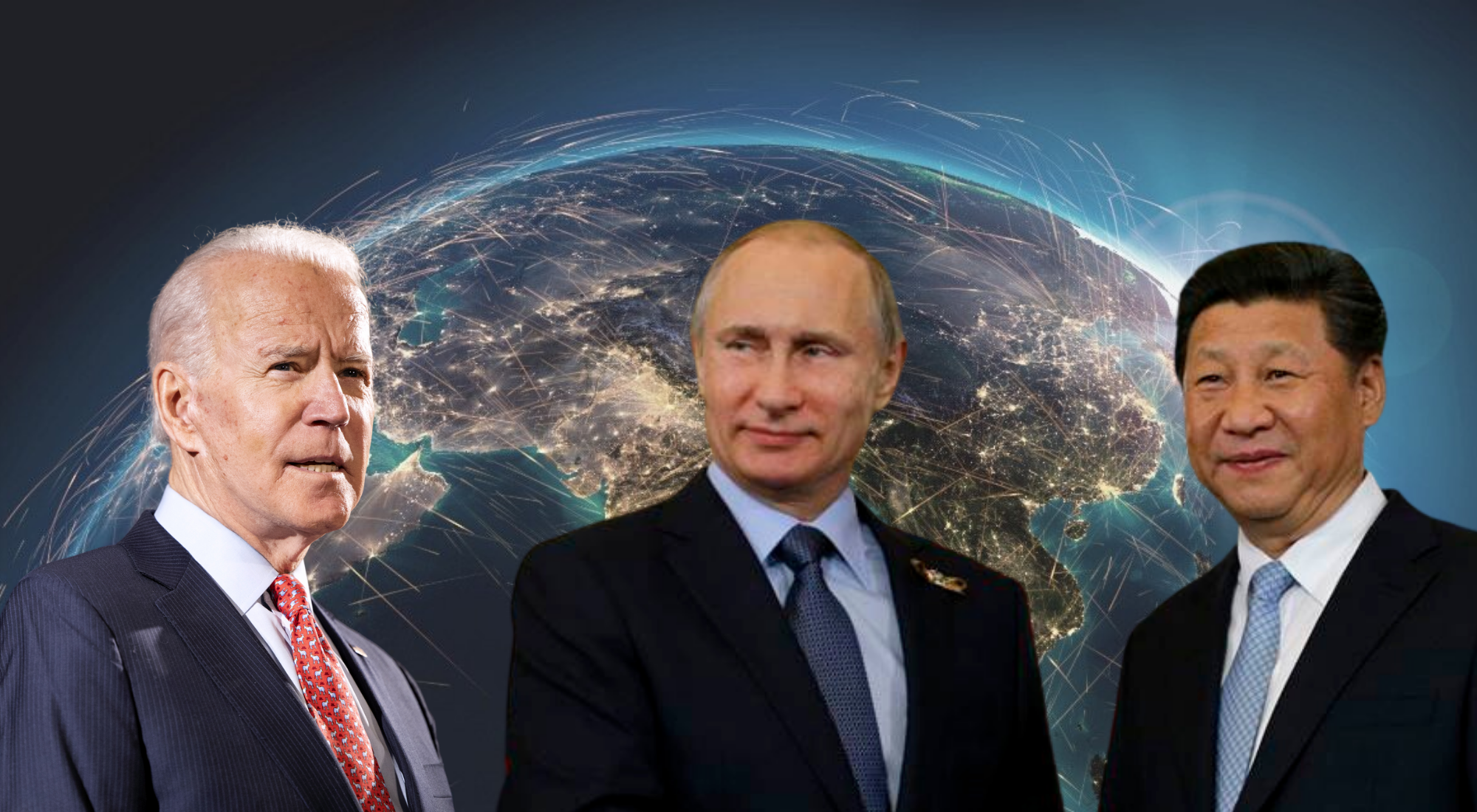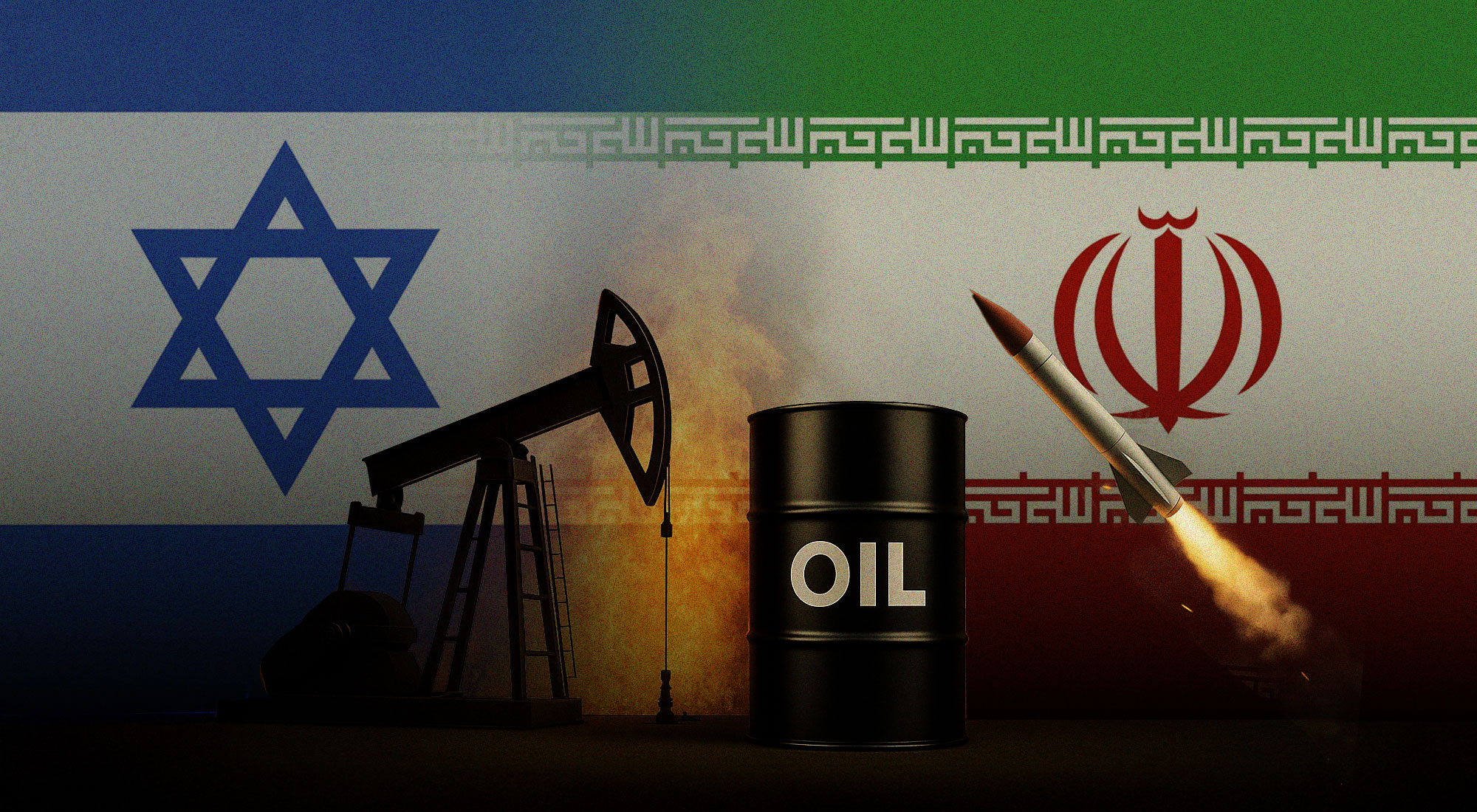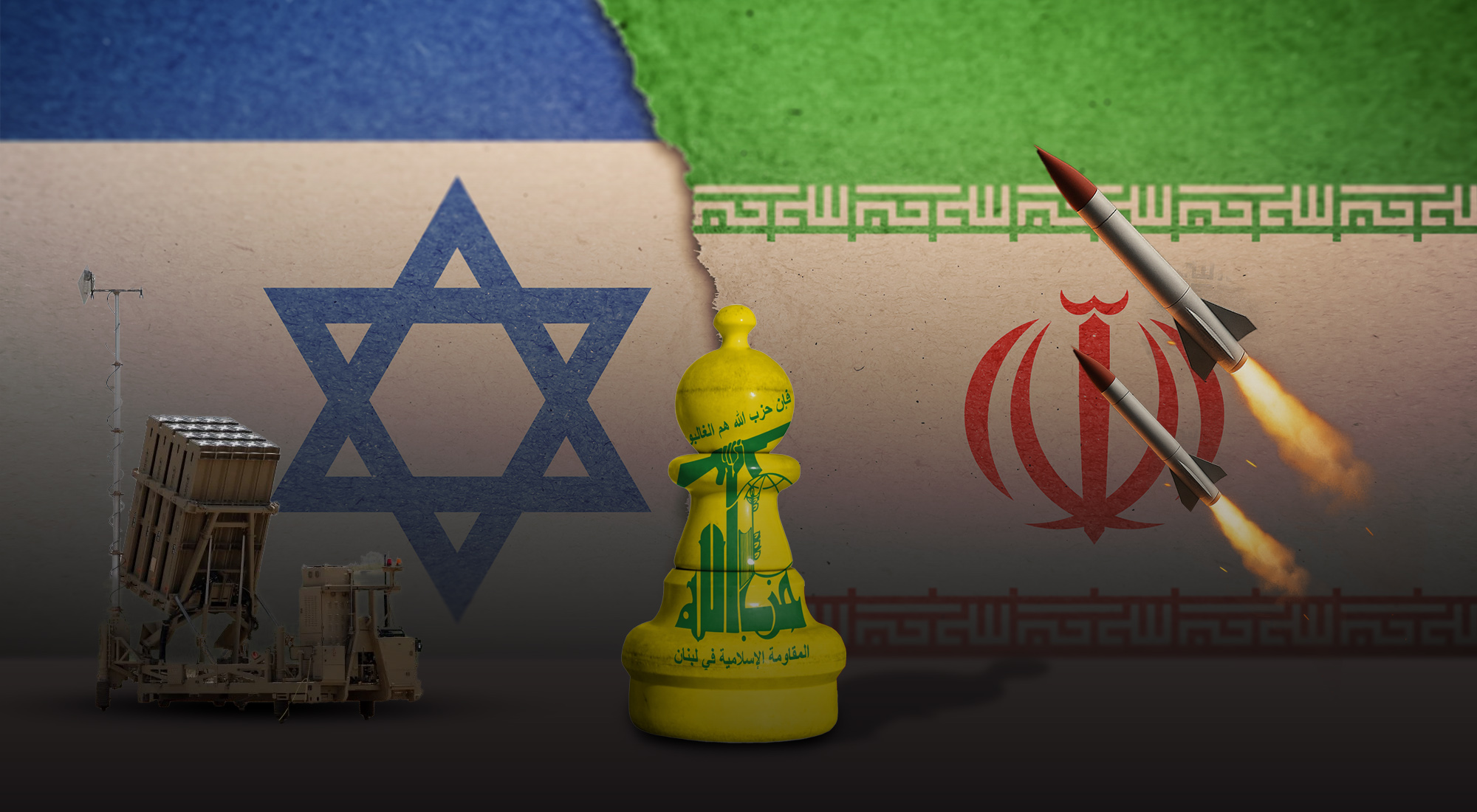The British Prime Minister Winston Churchill once described Russia as “a riddle, wrapped in a mystery, inside an enigma.”[1] For him, the Eurasian powerhouse represents the ultimate ‘other’ lying outside the West’s conventional understanding of geopolitics. But his fateful alliance with the Soviet leader Joseph Stalin during World War II, and the subsequent decades-long Cold War that divided Europe, inextricably tethered the West’s geopolitical fate to Russia’s machinations for much of the 20th century. In much of contemporary East Asia, however, Russia remains a Churchillian riddle. But this wasn’t always the case.
Beginning with Ivan III (1462-1505), the double-headed eagle, which has roots in both Persian and Roman empires, served as an official emblem for a whole string of Russian czars for centuries. This emblem represented the truly transcontinental character of Russia, a Eurasian imperium that once extended from the borders of California in the east to the Baltic Sea on the west. Under Peter the Great, Russia, springing out of a former Muscovy princedom, began its southwards and eastwards march into Asian heartlands, chipping away at the lands and influence of other domains from Safavid Persia in the Near East to the northern frontiers of the Qing Empire in the Far East.[2]
At the beginning of the 20th century, however, Czarist Russia earned the unenviable distinction of becoming the first modern European power to suffer defeat at the hands of an Asian nation during the Russo-Japanese War (1904-1905).[3] But Bolshevik Russia, and the ensuing Soviet Empire, soon became a decisive force in East Asian geopolitics throughout the second half of the 20th century. From the Korean War to the Indo-China Wars, Moscow was a pivotal player in shaping the Asian geopolitical landscape as well as the strategic calculus of all regional states.[4]
In the twilight years of the Cold War, however, Russia could only count on Vietnam as a regional ally, especially as both the US and China began consolidating their own spheres of influence in Southeast Asia.[5] At the beginning of the 21st century, Russia, perched on the ashes of a fallen empire and traumatized by the ‘shock therapy’ of the 1990s, became a distant memory across much of Asia.[6] Even Vietnam began to turn towards the West following its adoption of the “Doi Moi” economic reforms.[7]
In the past decade, however, Russian President Vladimir Putin has steadily pivoted toward East Asia, the new center of global economic gravity, in order to stave off the impact of Western sanctions. Eager to diversify their strategic relations beyond the Sino-American rivalry, Southeast Asian nations have warmly welcomed expanded strategic ties with Moscow, ranging from defense and energy cooperation to ‘vaccine diplomacy’ amid the COVID-19 pandemic. In short, Russia is positioning itself as a ‘third force’ – an alternative pole in an increasingly bipolar geopolitical landscape – in Asia.
The Other Pivot
Intent on extricating his country from a decade of tumultuous transition that marked much of Boris Yeltsin’s tempestuous presidency, Putin spend his first decade in power by focusing on reestablishing the foundations of a revitalized Russia.[8] Central to his strategy was the cultivation of a broadly stable and mutually respectful relationship with the West, especially America, which initially welcomed Moscow’s tactical cooperation in the Global War on Terror. If anything, Russia, boosted by petrodollars, was soon the darling of the Wall Street, which began touting the emergence of a BRICS (Brazil, Russia, India, and China) grouping of major emerging markets.[9] But the crisis in Ukraine in the mid-2010s upended broadly stable ties between Russia and the West, triggering a string of battering sanctions against Moscow.
With the decisive end of an undeclared rapprochement between the West and Russia, Putin began to set his gaze on new horizons with renewed determination. To be fair, the foundations of Russia’s pivot to Asia were established a few years earlier. This liminal strategic reorientation was fully on display during the 2012 Asia-Pacific Economic Cooperation (APEC) summit in Vladivostok, the easternmost Russian metropolis, which lies on the northern shores of the Sea of Japan and at the edge of China’s northern frontiers. Eager to impress its guests, Russia effectively declared its diplomatic debut in Asia by spending a whopping $21 billion to revamp the city’s basic infrastructure ahead of the lavish APEC meeting. Moscow left little doubt as to its commitment to impress Asian counterparts when it built a 3,600-foot cable-stayed bridge – longest of its kind in the world – connecting Vladivostok to Russky Island.[10]
The following year, Putin raised the stakes by making a plethora of ‘march to the east’ pronouncements during the St. Petersburg International Economic Forum. Admitting Moscow’s overly Western-looking strategic orientation, he called for the reassertion of his country’s Eurasian identity. During the high-profile event, which generated global headlines, the Russian leader focused on three key issues in particular, namely: (i) revamping basic infrastructure in the long-neglected Siberian region; (ii) expanding Russian energy and raw material exports to booming Asian economies; and (iii) re-establishing Russia’s naval footprint in the Western Pacific as well as doubling down on the country’s diplomatic presence in all major capitals of the region.[11]
The coordinated Western sanctions following Russian occupation of Crimea only reinforced Putin’s protean lurch towards the East. The $400 billion “Deal of the Century” energy agreement between Russia and China, and expanding war games as well as arms deals between the two powers over the succeeding years, served as the opening salvo of Russia’s pivot to Asia.[12] Warming Sino-Russian ties coincided with Russian efforts to resolve disputes with Japan over the Kuril Islands, expand high-tech cooperation with South Korea (ROK), and fortify Russian strategic ties with North Korea (DPRK).[13] However, despite these strides made in Moscow’s relations with Northeast Asian powers, especially China, it’s arguably in Southeast Asia where Russia’s pivot to Asia is most palpable.
The Quest for Autonomy
Once reflecting on the emerging order in Asia, the late Singaporean Prime Minister Lee Kuan Yew warned that the rise of China would upend regional order. As a lifelong adviser to Chinese leaders, from Deng Xiaoping to Xi Jinping, the Singaporean statesman warned “[t]he Chinese will [initially] want to share this century as co-equals with the U.S.”, but that their ultimate “intention [is] to be the greatest power in the world”. Despite his extremely warm relations with Chinese leaders, who were inspired by Singapore’s blend of capitalism and single-party-rule, Lee argued that there is a widely “held consensus that the U.S. presence in the region should be sustained,” since the American “presence [alone] makes a difference and makes for peace and stability in the region.”[14]
The Singaporean leader’s open support for “the [continued] presence of U.S. firepower in the Asia-Pacific” was by no means an abandonment of the city-state’s commitment to strategic neutrality and “non-alignment”.[15] If anything, it is precisely because of Singapore’s fears of an overly dominant China bent on reasserting hegemony in its historical backyards and assuming the absence alternative powers in the region.[16] At the heart of Singapore’s strategic doctrine are the two themes of “vulnerability” (to predation by larger powers) and “pragmatism” (maintenance of functional ties with all major powers). In many ways, this is also the story of almost all Southeast Asian nations, who are committed to a strategy of “pragmatic equidistance” in order to preserve for themselves the maximum possible room for maneuver.[17]
Unwilling to be bound to either the US or China, Southeast Asian states, most especially Singapore, have actively pursued strategic and economic ties with Indo-Pacific “middle powers”, from Japan and Australia to India, the European Union (EU) and, more recently, Russia. This explains why, inter alia, Southeast Asian nations chose to conduct multilateral naval drills with Moscow in 2021 following similar exercises with the US (2019) and China (2018) in previous years.[18] The first major military exercise between the Association of Southeast Asian Nations (ASEAN) and Russia was a clear demonstration of Southeast Asian nations’ fervent desire to reduce dependency on and avoid alignment with either the US or China.
For a long time, however, the Philippines, as a century-old US ally, remained a notable exception to this regional trend. It was not until the ascent of populist president Rodrigo Duterte, who detested his country’s overreliance on the West, that this Southeast Asian country began to actively engage alternative powers, especially Russia. Just months into office, the Philippines and Russia began exploring major trade and investment deals worth $2.5 billion.[19]
After barely a year in power, Duterte became the first Filipino president in recent memory to embark on a state visit to Moscow, where he held cordial conversations with both President Putin and then Russian Prime Minister Dmitry Medvedev. While generally snubbing America officials, especially under the Obama administration, Duterte also met the Russian leaders on the sidelines of the APEC and ASEAN. He would make another visit to Moscow in 2019, where he was a special guest of honor as well as speaker at the Putin-hosted Valdai Forum in Sochi.[20]
Under Duterte’s watch, Russian warships docked at the Manila Bay for the first time in modern history. Soon after that, Russia also dispatched its first-ever defense attaché to the Philippines as both sides explored large-scale defense deals, including sales of advanced attack helicopters, submarines, and fighter jets. During a visit to a Russian warship docked in Manila, Duterte called on his guests to be “our ally to protect us” without clarifying the actual source of threat.[21] Throughout the Filipino president’s term in office, Russian military vessels made at least seven port calls at Manila Bay, an unmistakable symbol of rapidly normalized relations.[22]
The Ties that Bind
Overall, four key elements are driving the blossoming strategic ties between Russian and ASEAN. The first element is the attractiveness of Putin’s model of “Sovereign Democracy” (suverennaya demokratiya), whereby a charismatic strongman preserves national autonomy against external threats. This is the reason why Duterte, with his “independent foreign policy”, has described the Russian leader as his “favorite hero”, while Indonesia’s defense minister Prabowo Subianto has also implicitly extolled strongman rule and national greatness by likening himself to Putin.[23] For the largely illiberal Southeast Asian political elite, which frets over both Western interference as well as China’s overbearing attitude, Putin’s Russia represents an ideal form of governance in terms of both domestic and foreign policy.[24]
Second, Southeast Asian nations view Russia as a major partner for modernizing their armed forces amid growing geopolitical tensions in the region. In fact, Moscow’s world-class military-industrial complex and no-strings-attached approach to arms exports has made it the leading supplier of military equipment in ASEAN. Between 2010 and 2015, Russia doubled its arms sales to regional nations to the extent that they accounted for 15 percent of the country’s total arms sales in 2015.[25] Between 1999 and 2018, Russia ($10.7 billion) was the biggest arms exporter to Southeast Asia, surpassing both the US ($8.2 billion) and China ($2.6 billion) and accounting for 26 percent of the total arms imported by ASEAN nations.[26]
Historically, the biggest regional customer has been Vietnam, a former ally, which has expanded Russia’s access to the prized Cam Ranh Bay in recent years. But other Southeast Asian countries, from Malaysia to Indonesia, are also beginning to increase their purchases of advanced Russian military hardware, most especially fighter jets, amid rising maritime tensions in the South China Sea. [27] Aside from defense exports, Russian energy companies have also become an increasingly important partner for offshore hydrocarbon exploration activities across the South China Sea and North Natuna Sea in recent years. In contrast to Western energy investments in the area, the warm relations between Moscow and Beijing has meant that Russia’s exploration activity in potentially contested maritime zones hasn’t, so far, been met with any diplomatic rebuke from China nor sustained harassment by Chinese militia and para-military vessels as yet. Things can, of course, change on the ground, but so far Vietnam, Indonesia and the Philippines have actively courted Russian energy investments in their exclusive economic zones.[28]
And finally, Russia has also managed to make major ‘soft power’ strides during the COVID-19 pandemic, thanks to its early development of the Sputnik V vaccine, which, in the words of Putin, is “as reliable as an AK-47” rifle.[29] Over the past year, Russia ramped up its ‘vaccine diplomacy’ by offering to co-produce and sell large amounts of its COVID-19 vaccines, which are seen as safe and reliable by many Southeast Asian countries, especially Vietnam, which largely shunned Chinese vaccines throughout the pandemic.[30] The gaping hole in Russia-ASEAN relations, however, is in the realm of trade and investments. Partly thanks to Western sanctions, Russia’s trade with Southeast Asian nations stood at only $18.2 billion in 2019, a pitifully small total compared to either China’s (US$644 billion) or the US’s ($292.4 billion). Meanwhile, Western sanctions are also complicating large-scale defense deals with Southeast Asian nations, especially US allies such as the Philippines. And Russia’s warm relations with Myanmar’s increasingly isolated junta have also raised eyebrows among regional players.[31]
To emerge as a major ‘third force’ in the region, Russia will have to adopt a comprehensive relationship with ASEAN nations, which goes beyond arms exports, energy investment and pandemic-related cooperation. Moving forward, both sides will have to explore substantive free trade and investment agreements in order to upgrade their strategic relationship. Nevertheless, what is clear is that both Moscow and its Southeast Asian counterparts are determined to preserve their strategic autonomy and transcend the confines of Sino-American rivalry.
References
[1] Cowell, Alan. 2008 “ Churchill’s definition of Russia still rings true,” The New York Times. December 2, 2021.https://www.nytimes.com/2008/08/01/world/europe/01iht-letter.1.14939466.html
[2] Massie, Robert. 2011. “Peter the Great: His Life and His World,” New York: Random House.
[3] Mishra, Pankaj. From the Ruins of Empire: The Revolt Against the West and the Remaking of Asia. New York: Picador, 2013.
[4] Kotkin, Stephen. 2017. Stalin: Waiting for Hitler, 1929-194. New York: Penguin; Lovell, Julia. Maoism: A Global History. New York: Vintage.
[5] On post-détente Sino-American competition in Southeast Asia, see Lovell, Julia. Maoism: A Global History. New York: Vintage.
[6] On Russia’s economic troubles throughout the 1990s see the chapter 6 on Russia in Sharma, Ruchir. “Breakout Nations: In Pursuit of the Next Economic Miracles.” New York: W. W. Norton, 2012.
[7] On Vietnam’s economic liberalization see Tuan, Hong Anh. “Doi Moi and the Remaking of Vietnam”, GlobalAsia. December 2, 2021 https://www.globalasia.org/v4no3/cover/doi-moi-and-the-remaking-of-vietnam_hong-anh-tuan
[8] Gessen, Masha. The Man Without a Face: The Unlikely Rise of Vladimir Putin. Reprint ed. New York: Riverhead Books, 2013.
[9] On Russia’s economic troubles throughout the 1990s see the chapter 6 on Russia in Sharma, Ruchir. “Breakout Nations: In Pursuit of the Next Economic Miracles.” New York: W. W. Norton, 2012.
[10] IBT Staff (2013) “Is Russia’s APEC Summit A $21 Billion Waste?”International Business Times. December 2, 2021 https://www.ibtimes.com/russias-apec-summit-21-billion-waste-761551
[11] Hill, Fiona, and Bobo Lo. “Putin’s Pivot.” Foreign Affairs. July 31, 2013. https://www.foreignaffairs.com/articles/russian-federation/2013-07-31/ putins-pivot.
[12] Wan, William, and Abigail Hauslohner. “China, Russia Sign $400 Billion Gas Deal.” The Washington Post. May 21, 2014. https://www.washingtonpost. com/world/europe/china-russia-sign-400-billion-gas-deal/.
[13] Lendon, Brad, and Katie Hunt. “China, Russia Begin Joint Exercises in South China Sea.” CNN. September 13, 2016. https://edition.cnn. com/2016/09/12/asia/china-russia-south-china-sea-exercises/.
[14] Allison, Graham, Robert Blackwill, and Ali Wyne. Lee Kuan Yew: The Grand Master’s Insights on China, the United States and the World. Cambridge: The MIT Press, 2013.
[15] Ibid.
[16] Ang Guan Teo, Kei Koga, Conceptualizing equidistant diplomacy in international relations: the case of Singapore, International Relations of the Asia-Pacific, 2021;, lcab011, https://doi.org/10.1093/irap/lcab011
[17] Laksamana, Evan. 2017. “Pragmatic Equidistance: How Indonesia Manages its Great Power Relations”, in China, the United States, and the Future of Southeast Asia, New York: New York University Press
[18] Simes, Dimitri, 2021. “1st ASEAN-Russia navy drills send messages on AUKUS, China,” Nikkei Asia. December 2, 2021https://asia.nikkei.com/Politics/International-relations/1st-ASEAN-Russia-navy-drills-send-messages-on-AUKUS-China?fbclid=IwAR0cNbNP33jpI6NqWhHY1ZkbLno6XS82qjrSxAqVDOk3jxXrPCYrEAB5aZg
[19] Yap, D.J. “Russia to Buy $2.5B in PH Agri Produce—DTI Chief.” Inquirer. November 21, 2016. https://globalnation.inquirer.net/149893/ russia-buy-2-5b-ph-agri-produce.
[20] Heydarian, Richard Javad. 2019 “Duterte’s Pivot to Russia”, Asia Maritime Transparency Initiative. December 2, 2021 https://amti.csis.org/dutertes-pivot-to-russia/
[21] Salaverria, Leila. “Duterte Asks Russia: Be PH Ally and Protector.” Inquirer. January 7, 2017. https://globalnation.inquirer.net/151296/duterte-asks- russia-ph-ally-protector.
[22] Nappmuceno, Priam. “Russian naval squadron in Manila for port visit,” Philippine News Agency. December 2, 2021 https://www.pna.gov.ph/articles/1159997
[23]Gonzales, Yuji Vincent. “Clinton? Trump? Duterte Says Putin ‘My Favorite Hero’.” Inquirer. October 23, 2016. https://globalnation.inquirer. net/147585/duterte-trump-airing-valid-issues-putin-my-favorite-hero.
[24] Heydarian, Richard Javad. 2019 “Duterte’s Pivot to Russia”, Asia Maritime Transparency Initiative. December 2, 2021 https://amti.csis.org/dutertes-pivot-to-russia/.
[25] Otto, Ben. “The Russians Are Coming…to Southeast Asia.” The Wall Street Journal. July 6, 2016. https://www.wsj.com/articles/the-russians-are-coming-to-southeast-asia-1467824327.
[26] Wezeman, Siemon, (2019) “Arm Flows to Southeast Asia”, Stockholm International Peace Research Institute. December 2, 2021 https://www.sipri.org/sites/default/files/2019-12/1912_arms_flows_to_south_east_asia_wezeman.pdf
[27]Snegov, Alex. “Vietnam Open to Russian Return to Cam Ranh Bay.” Russia Beyond. May 18, 2018. https://www.rbth.com/news/2016/05/18/ vietnam-open-to-russian-return-to-cam-ranh-bay_594025. .
[28] Heydarian, Richard Javad. 2019 “Duterte’s Pivot to Russia”, Asia Maritime Transparency Initiative. December 2, 2021 https://amti.csis.org/dutertes-pivot-to-russia/.
[29] Simes, Dimitri. (2021) “Guns and jabs: Russia courts ASEAN caught between US and China”, Nikkei Asia. December 2, 2021. https://asia.nikkei.com/Spotlight/Asia-Insight/Guns-and-jabs-Russia-courts-ASEAN-caught-between-US-and-China
[30] Ibid.
[31] Ibid.








